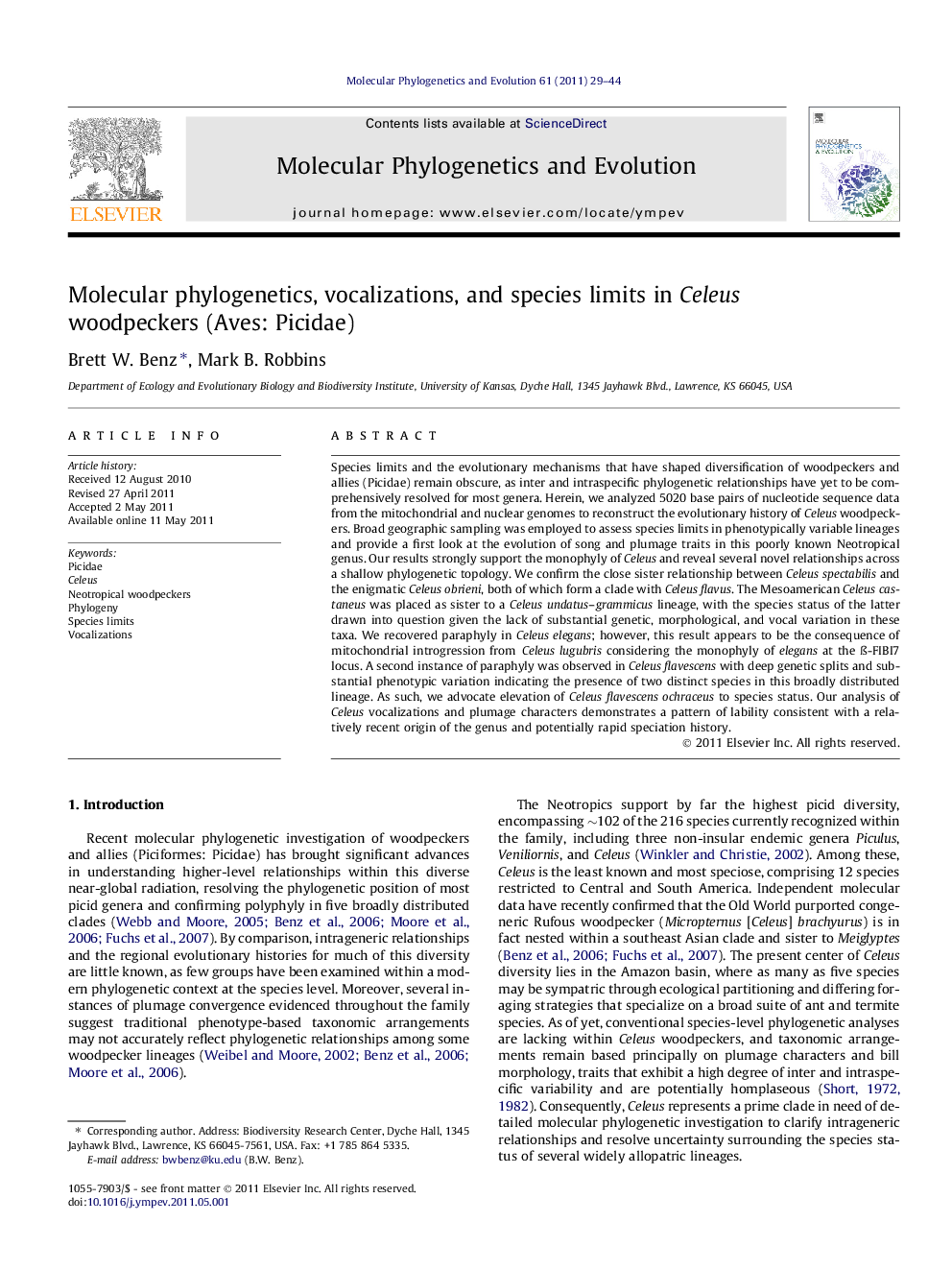| Article ID | Journal | Published Year | Pages | File Type |
|---|---|---|---|---|
| 5920439 | Molecular Phylogenetics and Evolution | 2011 | 16 Pages |
Species limits and the evolutionary mechanisms that have shaped diversification of woodpeckers and allies (Picidae) remain obscure, as inter and intraspecific phylogenetic relationships have yet to be comprehensively resolved for most genera. Herein, we analyzed 5020 base pairs of nucleotide sequence data from the mitochondrial and nuclear genomes to reconstruct the evolutionary history of Celeus woodpeckers. Broad geographic sampling was employed to assess species limits in phenotypically variable lineages and provide a first look at the evolution of song and plumage traits in this poorly known Neotropical genus. Our results strongly support the monophyly of Celeus and reveal several novel relationships across a shallow phylogenetic topology. We confirm the close sister relationship between Celeus spectabilis and the enigmatic Celeus obrieni, both of which form a clade with Celeus flavus. The Mesoamerican Celeus castaneus was placed as sister to a Celeus undatus-grammicus lineage, with the species status of the latter drawn into question given the lack of substantial genetic, morphological, and vocal variation in these taxa. We recovered paraphyly in Celeus elegans; however, this result appears to be the consequence of mitochondrial introgression from Celeus lugubris considering the monophyly of elegans at the Ã-FIBI7 locus. A second instance of paraphyly was observed in Celeus flavescens with deep genetic splits and substantial phenotypic variation indicating the presence of two distinct species in this broadly distributed lineage. As such, we advocate elevation of Celeus flavescens ochraceus to species status. Our analysis of Celeus vocalizations and plumage characters demonstrates a pattern of lability consistent with a relatively recent origin of the genus and potentially rapid speciation history.
Graphical abstractDownload full-size imageHighlights⺠Phylogenetic analyses confirm the sister relationship between C. obrieni and C. spectabilis. ⺠Discordance among mtDNA/nuDNA gene trees suggest introgression between C. lugubris and C. elegans. ⺠Paraphyly in C. flavescens revealed the presence of two distinct species. ⺠Shallow genetic divergences and labile song evolution suggest a recent speciation history among Celeus woodpeckers.
